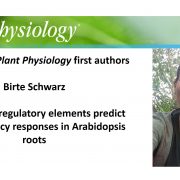
Recognizing Plant Physiology authors: Birte Schwarz
Plant Physiology, Plant Physiology: Author ProfilesBirte Schwarz, first author of Putative cis-regulatory elements predict iron deficiency responses in Arabidopsis roots
Current Position: Ph.D. candidate in the lab of Prof. Dr. Petra Bauer at Heinrich Heine University, Düsseldorf, Germany. Starting February 2020, postdoctoral researcher in the group…

Continuing the Celebration - How Global is the Global Plant Science Calendar?
BlogThis month we are celebrating the anniversary of The Global Plant Science Events Calendar! So far, we have collected over 200 events. In the past year, the calendar has become one of our most viewed pages, but how global is the calendar?
To get an idea, here is a word cloud generated from the location…

Recognizing Plant Physiology authors: Yuzhu Lu
Plant Physiology, Plant Physiology: Author ProfilesYuzhu Lu, first author of SLENDER RICE1 and Oryza sativa INDETERMINATE DOMAIN2 Regulating OsmiR396 Is Involved in Stem Elongation
Current Position: associate professor, College of Bioscience and Biotechnology, Yangzhou University, Yangzhou, 225009, China
Education: 2005, Ph.D. from Wuhan University…
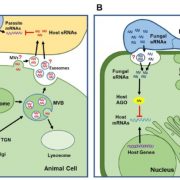
Review. Small RNAs and extracellular vesicles: New mechanisms of cross-species communication and innovative tools for disease control (PLOS Pathogens)
Plant Science Research WeeklyWe have only recently begun to appreciate the phenomenon of cross-species or cross-kingdom small RNA transfer, and its applications. Using examples from plants and animals, Cai et al. summarize how some pathogens have evolved the capacity to introduce small RNAs into their host to suppress host defense…
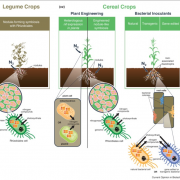
Review: Harnessing atmospheric nitrogen for cereal crop production ($) (Curr. Opin. Biotechnol.)
Plant Science Research WeeklyNitrogen demands for plant growth are accomplished through fertilizers or biological nitrogen fixation. Industrial production of nitrogen fertilizer is expensive and causes pollution due to leaching of unused fertilizer. In this review, Bloch et al. discuss the current status of biological nitrogen fixation…
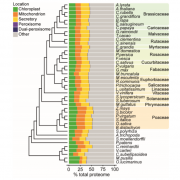
Gene duplication accelerates the pace of protein gain and loss from plant organelles (Mol. Biol. Evol.)
Plant Science Research WeeklyOrganelles, such as the chloroplast and nucleus, are structures with specific functions within a plant cell. It has been reported that many related, or homologous, proteins function in different organelles. However, how and why organellar proteins have diverged over evolutionary time remains unclear.…
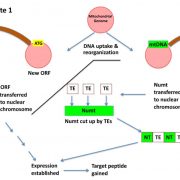
Mitochondrial fostering: the mitochondrial genome may play a role in plant orphan gene evolution (bioRxiv)
Plant Science Research WeeklyOrphan genes are those that are found in only a single species. In trying to understand the origin of orphan genes, O’Conner and Li have found that many of these orphan genes are likely to have originated as mitochondrial genes, as many are nuclear genes whose encoded proteins are targeted to the mitochondria…
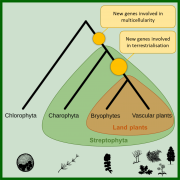
The origin of land plants is rooted in two bursts of genomic novelty (Curr. Biol)
Plant Science Research WeeklyThe transition of plants from water to land is one of the most momentous shifts in the history of life on Earth. 500 million years ago, the first land plants dramatically changed the environments on the planet, creating soils, rivers and the oxygen-rich atmosphere. However, the factors that enabled early…
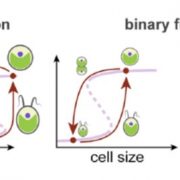
A single light-responsive sizer can control multiple-fission cycles in Chlamydomonas (Curr. Biol.)
Plant Science Research WeeklyHow do cells know when it is time to divide? Helt et al. explore this question using the single-celled alga Chlamydomonas. Unlike most animal and fungal cells, which tend to maintain a relatively consistent size by dividing after their size has doubled, Chlamydomonas cells can undergo several rounds…

